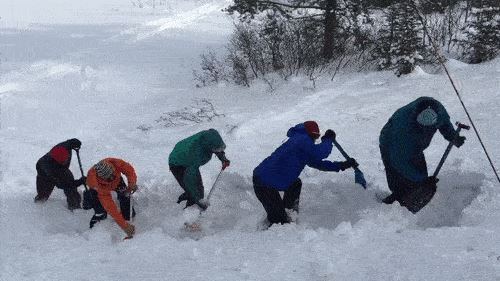
Strike Team Avalanche Shoveling Method - Rotations
If you have the optimal number of Strike Team shovellers, the first or second person calls for rotation. The first person goes to the back, and all other shovelers rotate toward the front (No. 2 moves to No. 1 position, No. 3 to No. 2 position, etc.). Each shoveller should be responsible for approximately an 80cm cross-section of the excavation corridor.
Shovel for two to three minutes, then rotate.
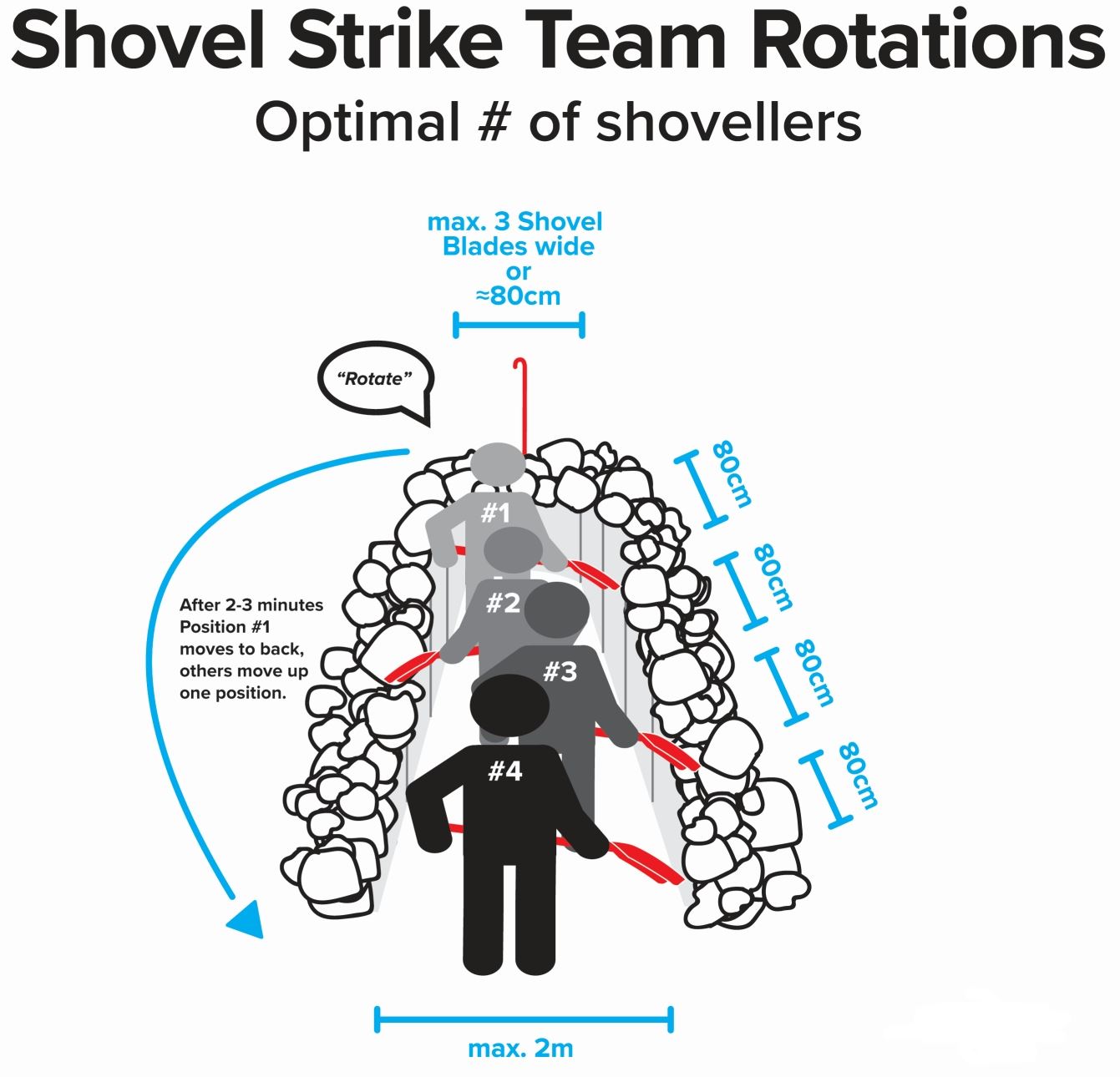
The lead or second shoveller can call the rotation whenever the lead shoveller starts to slow down or is getting tired or has shovelled for two to three minutes.
When there is one extra person in addition to the optimal number of shovellers, there can be one person designated to be shovel master. The shovel master stands near the probe, ensures that spacing and technique remains correct, makes sure the side walls are vertical, and calls for the rotation. The shovel master has a shovel ready and jumps into position No. 1. All others rotate back one position. The last shoveller rotates into the shovel master position to rest for a cycle.
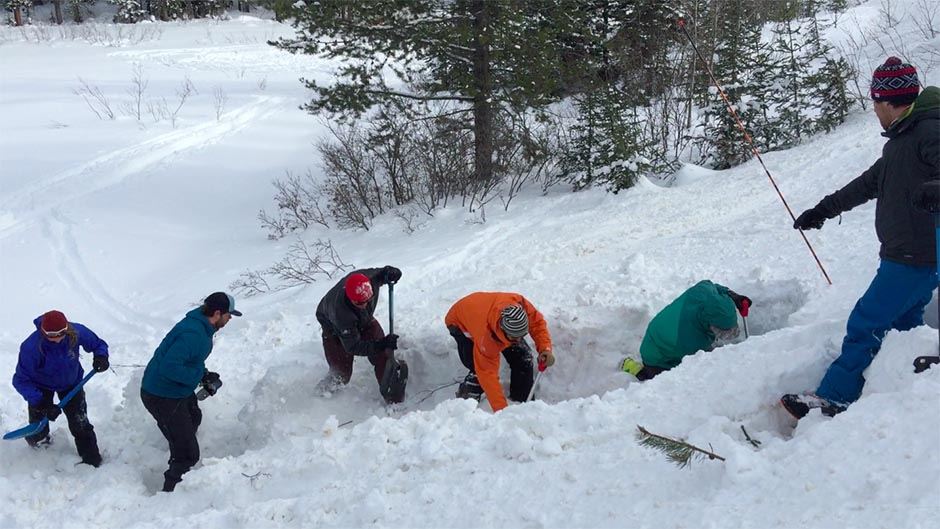
If there are extra shovellers (in addition to the shovel master), the shovel master directs the Shovel Strike Team and does not take a turn as shoveller. The first extra shoveller jumps into position No. 1. All others rotate back one position. The last shoveller rotates out, gets in line with the other shovellers, and rests until he/she cycles back in again. The shovel master continues to ensure spacing and technique are correct, and calls for rotation.

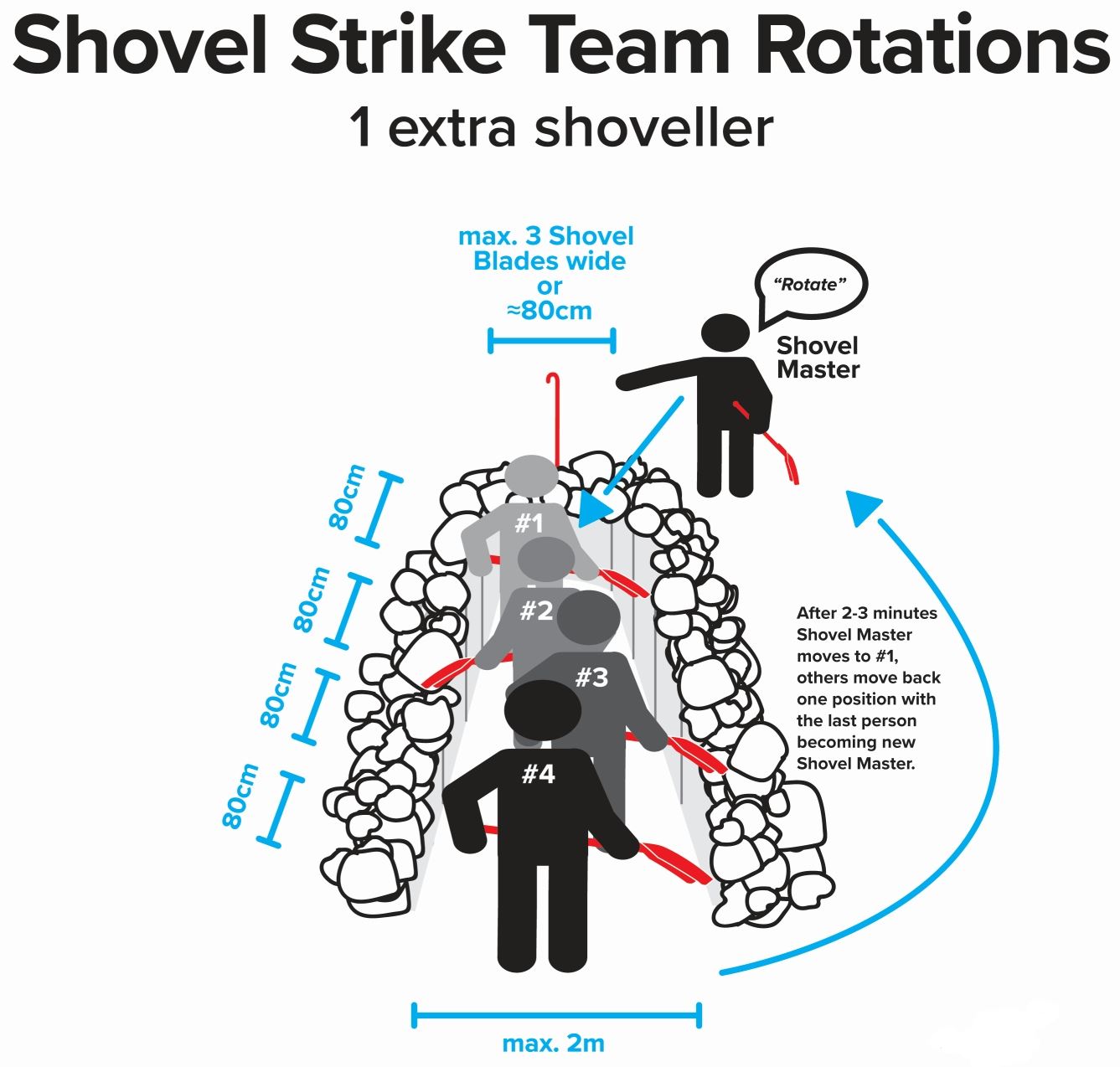
Special Considerations
If you do not have enough shovelers for the burial depth and slope
This is very likely in companion rescues involving small groups. To initially create the back portion of the excavation corridor, start shovelling downslope of the probe at a distance of about 1/2 the burial depth. Then shovel toward the probe and down to the probe tip.
If the subject is buried 1 meter or less
If the subject is buried one meter (1m) or less, put two shovellers at the front, digging right down to either side of the probe strike. This will increase the probability of locating a body part and therefore reaching the airway faster. The rest of the shovellers line up behind in single file as per regular spacing. For shallow burials one meter (1m) deep or less, there is no rotation of shovellers unless one of the front shovellers breaks a shovel or starts to slow down.
In Part 2 and Part 3 of our Strike Team Shovelling series, we’ll discuss: 1) How to fine tune the excavation once you reach the victim, and 2) What to do if the burial is so deep you don’t actually have a probe strike.
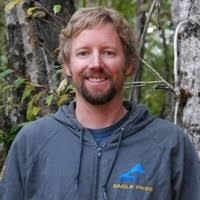
(Jordy Shepherd is an ACMG/IFMGA mountain guide and BCA ambassador/instructor, living with his family in Canmore, Alberta. Shepherd has lived, worked and played in the mountains his whole life. His work experience includes: Canadian Avalanche Association Course Leader for Avalanche Search and Rescue Advanced Skills, Provincial Park Ranger, National Park Warden, wildlife-human conflict specialist, wildland firefighter, structural firefighter, mountain and industrial rescue specialist, heli-skiing operations manager and lead guide, and licensed real estate agent: www.PeakAlpine.com www.CanmoreRealEstate.ca. Shepherd enjoys guiding and instructing clients to achieve their personal best, with a focus on avalanche safety and enjoyment of the mountains.)